Tele ICU Care ROI: Unlocking Value and Cost Savings for Hospitals

Tele ICU Care: Cost Savings for Hospital Networks of all Sizes
Tele ICU care presents substantial cost-saving opportunities to budget-conscious hospitals and healthcare facilities of all sizes.
Researchers are continuing to unpack the full value of ICU telehealth services to hospitals and critical care staff, but studies have proven tele ICU care improves the bottom line of small and large-scale hospital systems in a myriad of ways.
Besides being a cost-effective solution to implement, tele ICU can generate direct ROI by increasing annual case volumes and revenues, and decreasing hospital length of stay – even without full-scale integration.
Learn more about the role Intercept Telehealth’s ICU services can play in your hospital or healthcare facility with the following supporting studies.
Tele ICU Care Cost Savings Simplified
Professor Byung-Kwang Yoo, M.D., Ph.D., of UC Davis Health closely examines the economic practicalities of implementing a tele ICU solution within a healthcare space in his report, How telemedicine can lower costs in the ICU.
In it, he uses quality-adjusted life years (QALY) as a metric to consider a medical treatment’s effectiveness versus its cost.
Considering such factors as a patient’s quality of life, ability to care for oneself, pain levels, and the annual cost of medical interventions – it gives healthcare providers an understanding of which treatment paths yield the best results in the most cost-effective way.
His research shows that tele ICU is a cost-effective solution, especially when compared to other medical interventions that are routinely utilized, such as hemodialysis.
Using 2014 dollars, the study shows:
- Telemedicine increases QALY by 0.011 at an additional cost of $516/patient, which is $45,320 per QALY
- Health economists consensus is that $100,000 / QALY is cost-effective
- In comparison, hemodialysis is $129,000 per year
- In 37% of simulations, tele ICU had a cost-savings – and in 67% of simulations, tele ICU was cost-effective ( ie. < $100,000 / QALY)
Tele ICU Care: Driving Revenues and Improving Efficiency
Tele ICU offerings can also generate direct ROI by increasing both annual case volumes and annual case revenues, while simultaneously decreasing hospital length of stay (LOS).
A study from the UMass Memorial Critical Care Operations Group used several key metrics of a non-tele ICU healthcare facility against another with a tele ICU solution in place.
Compared to the non-tele ICU facility (and accounting for initial capital and operational costs), the tele ICU without a logistic center / COR saw:
- +20% in case volume
- -9% in hospital LOS
- +20% in per case revenue
- +294% in direct contribution margin per case, from $1,667 to $6,568*
Even when considering inflation, the end results revealed a “financial argument to encourage wider adoption of ICU telemedicine.”
*Using 2015 dollars; research began in 2007, during the pre-telehealth era, and ended in 2013, prior to the pandemic.
Tele ICU Care for Large Hospital Networks
Direct ROI increases may also be seen from the extension of tele ICU services to non-ICU bed scenarios (such as rapid response and emergency medical team activations) – even when the tele ICU intervention is limited to certain hours per day.
One academic study, entitled Projecting Critical Care Beyond the ICU: An Analysis of Tele-ICU Support for Rapid Response Teams (RRT), examines the financial solvency practicalities of tele-critical care beyond the ICU (while evaluating care offered by RRTs), showing:
- A 67-90% increase in patients that weren’t transferred to an ICU after RRT (included patients not managed with tele ICU support, which suggests a positive spillover effect)
- A 66% average cost reduction from avoidance of unnecessary ICU transfers, with a savings of $3,550 per patient (totaling $277,600 for the 78 patients)*
- Above cost reductions is the amount spent on IT infrastructure, with an ROI of $1.66 per $1 invested in IT support
While large-scale hospital systems with hundreds of ICU beds can benefit from the supplementary ICU 24/7 monitoring and specialist support provided by Intercept Telehealth, so can smaller hospitals, especially those in rural areas.
*Financial figures drawn from 2014 and reflect 24/7/365 day coverage with physicians and RNs, not night coverage
Tele ICU Care for Small Hospitals in Rural Communities
The remarkable financial efficiency and cost-saving benefits of tele ICU are not exclusive to large hospital networks. Small ICUs in hospitals serving remote communities can also see significant ROI with a tele ICU system.
Besides allowing for 24/7 patient monitoring and specialist access when onsite staffing is a challenge, there are gains in patient services with reduced transfers and improved operational efficiency overall.
A 2020 study examined the economics of implementing tele ICU services at a 60-bed military hospital, General Leonard Wood Army Community Hospital. Findings from the Implementation of Tele-Critical Care at General Leonard Wood Army Community Hospital study saw:
- + 8-14% surgical ICU admissions
- A decrease in ICU length of stay from 2.7 days to 2.2 days
- -30% in costs of out-of-network civilian healthcare thanks to reduced out-migration (care that the military system must pay from a civilian hospital that could not be provided by the military hospital)
- + 19% ROI thanks to increased ICU earnings and decreased out-migration over one year
Tele ICU Care Solutions From Intercept Telehealth
Intercept Telehealth is a transformative tele-critical care provider, founded and led by board-certified physicians that have a firsthand understanding of the challenges facing hospitals and healthcare facilities across the U.S.
Leveraging state-of-the-art technology and data analytics, Intercept Telehealth provides the gold standard of quality of care with 24/7 patient monitoring and access to supplementary intensivists and specialists, helping reduce hospital LOS, increase admissions and overcome staffing shortages.
Learn more about the fully customized tele-critical care solutions that Intercept Telehealth can provide to your hospital, and how you can improve the quality of care you offer your patients – while increasing your efficiency and profitability.
Contact Intercept Telehealth today to learn more about how we improve the ROI of rural and remote healthcare facilities, large and small.
References
Yoo BK, Kim M, Sasaki T, Melnikow J, Marcin JP. Economic Evaluation of Telemedicine for Patients in ICUs. Crit Care Med. 2016;44(2):265-274. doi:10.1097/CCM.0000000000001426.
Lilly CM, Motzkus C, Rincon T, Cody SE, Landry K, Irwin RS; UMass Memorial Critical Care Operations Group. ICU Telemedicine Program Financial Outcomes. Chest. 2017 Feb;151(2):286-297. doi: 10.1016/j.chest.2016.11.029. Epub 2016 Dec 6. PMID: 27932050.
Pappas PA, Tirelli L, Shaffer J, Gettings S. Projecting Critical Care Beyond the ICU: An Analysis of Tele-ICU Support for Rapid Response Teams. Telemed J E Health. 2016;22(6):529-533. doi:10.1089/tmj.2015.0098.
McLeroy RD, Ingersoll J, Nielsen P, Pamplin J. Implementation of Tele-Critical Care at General Leonard Wood Army Community Hospital. Mil Med. 2020;185(1-2):e191-e196. doi:10.1093/milmed/usz147



